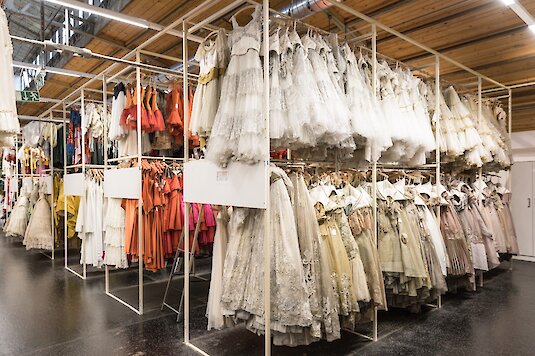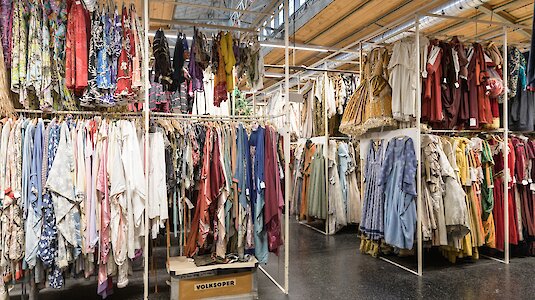Eco-friendly costumes in the theatre - a look behind the scenes
As a pressing issue of our time, the climate crisis has long since found its way onto the stage and has been increasingly in the spotlight in contemporary theatre productions for years. As places of cultural education, theatres offer space to sensitise people to social issues and challenges and to encourage sustainable action and thinking. However, it is not enough to simply address the topic in terms of content.
A look behind the scenes shows that artistic productions are often associated with a large use of resources. More and more cultural institutions are therefore also endeavouring to work sustainably behind the curtain and integrate more environmentally friendly practices into their operations. Since 2022, sustainable theatre companies can be certified with the Austrian Ecolabel for spoken and musical theatre if they meet certain criteria. The comprehensive catalogue of measures also includes criteria for the areas of costume and make-up. Ecological sustainability poses a particular challenge with regard to costume design and the associated material consumption. How can artistic visions be realised while taking climate-related aspects into account?
Sustainable procurement
Many of the materials commonly used for costumes and wigs are particularly harmful to the environment. The procurement and production of costumes can be made more sustainable by ensuring that the materials used are environmentally friendly. For new purchases, recycled materials and environmentally friendly natural fibres are preferable to conventional textiles. Ecologically certified fabrics coloured with natural dyes have a lower environmental impact than commercially available fast fashion products. To avoid dry cleaning, the use of machine-washable fabrics is an advantage.
Second-hand
Another sustainable alternative to buying new is to buy and use second-hand items. These are usually much cheaper than new items. The procurement of second-hand goods is often more time-consuming. It is advisable to involve the costume departments at an early stage in order to allow the necessary time for the sustainable provision of costumes. Negative environmental impacts can be almost completely avoided in this way. It is also a good idea to offer and sell your own costumes that are no longer needed on the second-hand market.
Raising the curtain for the circular economy
Linear economic activity has a negative impact on the environment and the climate and should therefore also be a thing of the past in cultural organisations. In principle, the use of materials should be avoided and reduced wherever possible. The reuse of costumes is always preferable to buying new ones. For this purpose, rooms are needed in which to collect what accumulates in the theatre. Careful management of these rooms is necessary in order to maintain an overview of the entire stock at all times. If it is not possible to have an in-house fund due to lack of space, it is possible to temporarily borrow items from a theatre fund. Borrowing is always cheaper than buying.

ART for ART Theaterservice GmbH, which is a subsidiary of the Austrian Federal Theatres (including the State Opera, Volksoper, Burg- and Akademietheater), should be mentioned here. As a service company, ART for Art GmbH operates costume and decoration workshops, scenery warehouses and a costume store at a total of four locations in Vienna and Lower Austria. The services are not only offered to the stage companies of the Austrian Federal Theatres, but also to external partners worldwide.
Conclusion
In view of the climate crisis, the theatre industry needs to rethink outdated structures and processes in order to produce plays in a more sustainable and ecological way. Artistic freedom and sustainability are not mutually exclusive. On the contrary, the topic of sustainability can inspire creativity in the industry with new impulses.
